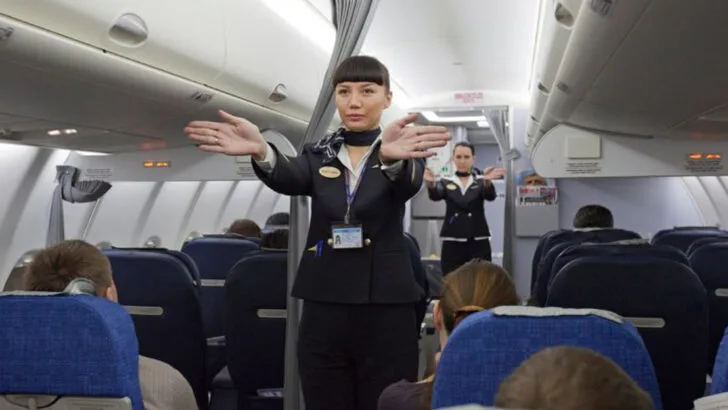Flying internationally can feel like a big deal, especially with all the rules, time zones, and airport stress. But there’s a lot happening behind the scenes that most travelers never notice. From surprising baggage tricks to little-known customs rules, a few hidden facts can make your trip smoother—and maybe even save you money. Whether you’re a first-time flyer or a frequent traveler, these details are worth knowing before your next big takeoff.
Airplane Meals Taste Different
Ever noticed how airplane food tastes a bit off? That’s no accident. At 30,000 feet, your taste buds behave differently. The low humidity and cabin pressure desensitize your senses, particularly for sweet and salty tastes. Airlines combat this by ramping up flavors to compensate. Noise also plays a part; it can dull your sense of taste further. Interestingly, chefs design airplane menus not just for the sky, but for the accompanying roar of engines. Next time you savor an in-flight meal, remember—it’s crafted uniquely for your high-altitude dining experience. Your taste buds are on a journey too!
Your Pilot Might Be Sleeping
On long-haul flights, don’t be alarmed if your pilot is catching some rest. Pilots take turns napping in secure areas to stay alert for the journey. Rest assured, strict regulations ensure at least one pilot is always attentive in the cockpit, guaranteeing safety. The concept may surprise many, but it’s a standard practice in international aviation. These scheduled naps help manage fatigue during long flights, ensuring pilots are refreshed and ready. In a way, pilots, like passengers, need their rest to perform optimally, underscoring the rigorous safety protocols in place.
Cabin Lights Dim for Emergency Preparedness
Have you ever wondered why cabin lights dim during takeoff and landing, especially at night? This isn’t just a mood-setting move. Dimming lights helps your eyes adjust to darkness, preparing you for a possible emergency evacuation. Your vision becomes accustomed to the low light, making it easier to see in case you need to exit the plane quickly. It’s a subtle yet crucial safety measure that airlines implement to ensure passengers’ readiness. So next time the lights go down, know it’s all about keeping you prepared and safe.
Flights Can Legally Fly Without Checked Luggage
It may surprise you to learn that your luggage can fly without you. If you miss your flight but your bags don’t, they might still make the journey. This occurs under specific security protocols and often due to tight transfer windows. Airlines manage baggage handling meticulously, and while it seems odd, it’s within legal boundaries. The logistics of baggage and passenger coordination can be a complex dance, but rest assured, security is always a priority. Your bag’s solo adventure can sometimes be part of the airline’s efficient operation.
International Flight Paths Avoid Conflict Zones
Ever noticed your international flight taking an unexpected, elongated route? That’s often because airlines meticulously plan paths to avoid conflict or political hot spots. Safety is paramount, and detours ensure passengers remain out of harm’s way. This strategic planning means a longer, curved trajectory, away from potential danger zones. The safety measures taken are a testament to the detailed preparation behind every journey. This route planning illustrates how global events can influence air travel, ensuring that even the skies remain a safe space for travelers.
Planes Carry Extra Cargo
Beyond passengers and their luggage, planes often carry an array of extra cargo. From fresh flowers to electronics, and even live animals, the cargo hold is a busy space. Airlines profit significantly from transporting these goods, sometimes flying alongside shipments of racehorses or valuable mail. It’s a side of aviation that passengers rarely see but plays a crucial role in global trade. This additional freight is carefully managed, contributing to the airline’s revenue. Next time you fly, think about the diverse freight sharing your journey!
Your Passport is Scanned Multiple Times
Before you board, your passport undergoes rigorous scrutiny. It’s scanned and cross-referenced with international databases for security clearance, fraud checks, and customs screening. This happens even for countries you’re just flying over. The multiple scans ensure passenger safety and comply with international protocols. Each scan serves as a checkpoint in aviation’s extensive security network. This digital vigilance keeps the sky safe, though it often goes unnoticed by travelers. The next time you’re waiting at that scanner, know it’s a key part of your travel security.
Lavatories Can Be Unlocked from Outside
Airplane lavatories hold a little-known secret: they can be unlocked from the outside. For safety and security reasons, there’s an external unlocking mechanism hidden under the “lavatory” sign. This is crucial for emergencies or if someone, say a curious child, accidentally locks themselves in. It’s a thoughtful design feature ensuring safety without compromising privacy. Flight attendants are trained to use this feature if necessary, showcasing yet another facet of their multifaceted roles. This small detail underscores the intricate safety measures in place for smooth travels.
Jet Lag Varies by Travel Direction
Why does jet lag feel worse heading east? It’s due to your body’s internal clock. Traveling east shortens your day, making it tougher to adjust than the longer days when flying west. This phenomenon puzzles many travelers but is a well-studied aspect of jet lag. Your body clock finds it easier to extend the day than to compress it. Next time you plan a trip, consider how direction influences your recovery. This knowledge offers a strategic approach to managing that post-flight fatigue, turning science into a travel hack.
Flight Attendants’ Extensive Training
Flight attendants are much more than just hosts. Their training is comprehensive, covering everything from firefighting to CPR, emergency births, and conflict de-escalation. They are, first and foremost, safety professionals. The service aspect is secondary to their primary role in ensuring passenger safety and comfort. This extensive training prepares them for a range of scenarios, often unseen by passengers. Despite the glamorous image, their role is a demanding one, underpinned by a commitment to safety. The next time you fly, appreciate the depth of their expertise onboard.
Cool Cabin Air for Health
Ever wonder why airplane cabins are so chilly? It’s not just for comfort. Cool air circulation reduces germ spread and minimizes issues like fainting or motion sickness. The temperature is carefully controlled to ensure passenger well-being throughout the flight. While blankets are provided for warmth, the cool environment is a thoughtful measure for health benefits. This balance of comfort and safety highlights how airlines prioritize passenger health. So next time you’re reaching for an airline blanket, remember there’s a purpose to that refreshing chill.

